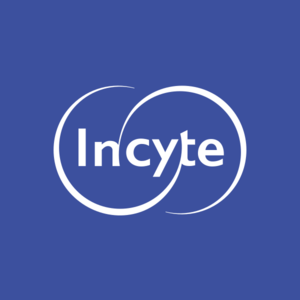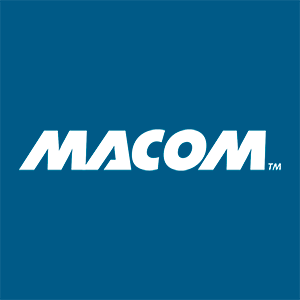
Sensata Technologies (ST)
Sensata Technologies is in for a bumpy ride. Its weak sales growth and low returns on capital show it struggled to generate demand and profits.― StockStory Analyst Team
1. News
2. Summary
Why We Think Sensata Technologies Will Underperform
Originally a temperature sensor control maker and a subsidiary of Texas Instruments for 60 years, Sensata Technology Holdings (NYSE: ST) is a leading supplier of analog sensors used in industrial and transportation applications, best known for its dominant position in the tire pressure monitoring systems in cars.
- Competitive supply chain dynamics and steep production costs are reflected in its low gross margin of 30.2%
- Underwhelming 5.3% return on capital reflects management’s difficulties in finding profitable growth opportunities, and its falling returns suggest its earlier profit pools are drying up
- Estimated sales growth of 2% for the next 12 months is soft and implies weaker demand


Sensata Technologies fails to meet our quality criteria. Better businesses are for sale in the market.
Why There Are Better Opportunities Than Sensata Technologies
High Quality
Investable
Underperform
Why There Are Better Opportunities Than Sensata Technologies
Sensata Technologies’s stock price of $32.82 implies a valuation ratio of 9x forward P/E. This sure is a cheap multiple, but you get what you pay for.
Cheap stocks can look like great bargains at first glance, but you often get what you pay for. These mediocre businesses often have less earnings power, meaning there is more reliance on a re-rating to generate good returns - an unlikely scenario for low-quality companies.
3. Sensata Technologies (ST) Research Report: Q3 CY2025 Update
Sensor manufacturer Sensata Technology (NYSE:ST) reported Q3 CY2025 results topping the market’s revenue expectations, but sales fell by 5.2% year on year to $932 million. On the other hand, next quarter’s revenue guidance of $905 million was less impressive, coming in 1.4% below analysts’ estimates. Its non-GAAP profit of $0.89 per share was 4.6% above analysts’ consensus estimates.
Sensata Technologies (ST) Q3 CY2025 Highlights:
- Revenue: $932 million vs analyst estimates of $922.1 million (5.2% year-on-year decline, 1.1% beat)
- Adjusted EPS: $0.89 vs analyst estimates of $0.85 (4.6% beat)
- Adjusted EBITDA: $212.1 million vs analyst estimates of $210.1 million (22.8% margin, 1% beat)
- Revenue Guidance for Q4 CY2025 is $905 million at the midpoint, below analyst estimates of $917.7 million
- Adjusted EPS guidance for Q4 CY2025 is $0.85 at the midpoint, below analyst estimates of $0.86
- Operating Margin: -13.2%, up from -20.3% in the same quarter last year
- Free Cash Flow Margin: 14.6%, up from 9.3% in the same quarter last year
- Inventory Days Outstanding: 87, down from 88 in the previous quarter
- Market Capitalization: $4.6 billion
Company Overview
Originally a temperature sensor control maker and a subsidiary of Texas Instruments for 60 years, Sensata Technology Holdings (NYSE: ST) is a leading supplier of analog sensors used in industrial and transportation applications, best known for its dominant position in the tire pressure monitoring systems in cars.
Sensata's products serve as the critical interface between physical phenomena and electronic systems across automotive, industrial, and aerospace sectors. The company's sensors measure variables like pressure, temperature, position, and speed, while its electrical protection components safeguard systems from power surges and electrical failures. These technologies are essential in applications ranging from vehicle braking systems to industrial equipment and aircraft controls.
The company operates through two main segments: Performance Sensing, which primarily serves automotive and heavy vehicle markets, and Sensing Solutions, which focuses on industrial and aerospace applications. In vehicles, Sensata's components enable functions like tire pressure monitoring, powertrain management, and high-voltage protection in electric vehicles. For industrial customers, the company provides controls for appliances, HVAC systems, and renewable energy infrastructure.
Sensata's business model relies on close engineering collaboration with customers, resulting in highly customized solutions that become deeply integrated into their products. This creates strong, long-lasting relationships—the company has worked with its top ten customers for an average of 32 years. As vehicles and industrial systems become increasingly electrified, connected, and automated, Sensata's sensing and protection technologies play an expanding role in ensuring safety, efficiency, and performance across these evolving platforms.
Sensatas peers and competitors include Analog Devices (NASDAQ:ADI), Texas Instruments (NASDAQ:TXN), Skyworks (NASDAQ:SWKS), NXP Semiconductors NV (NASDAQ:NXPI) and Monolithic Power Systems (NASDAQ:MPWR).
4. Analog Semiconductors
Longer manufacturing duration allows analog chip makers to generate greater efficiencies, leading to structurally higher gross margins than their fabless digital peers. The downside of vertical integration is that cyclicality can be more pronounced for analog chipmakers, as capacity utilization upsides work in reverse during down periods.
5. Revenue Growth
Reviewing a company’s long-term sales performance reveals insights into its quality. Any business can put up a good quarter or two, but the best consistently grow over the long haul. Over the last five years, Sensata Technologies grew its sales at a mediocre 4.4% compounded annual growth rate. This fell short of our benchmark for the semiconductor sector and is a poor baseline for our analysis. Semiconductors are a cyclical industry, and long-term investors should be prepared for periods of high growth followed by periods of revenue contractions.

We at StockStory place the most emphasis on long-term growth, but within semiconductors, a half-decade historical view may miss new demand cycles or industry trends like AI. Sensata Technologies’s performance shows it grew in the past but relinquished its gains over the last two years, as its revenue fell by 4.8% annually. 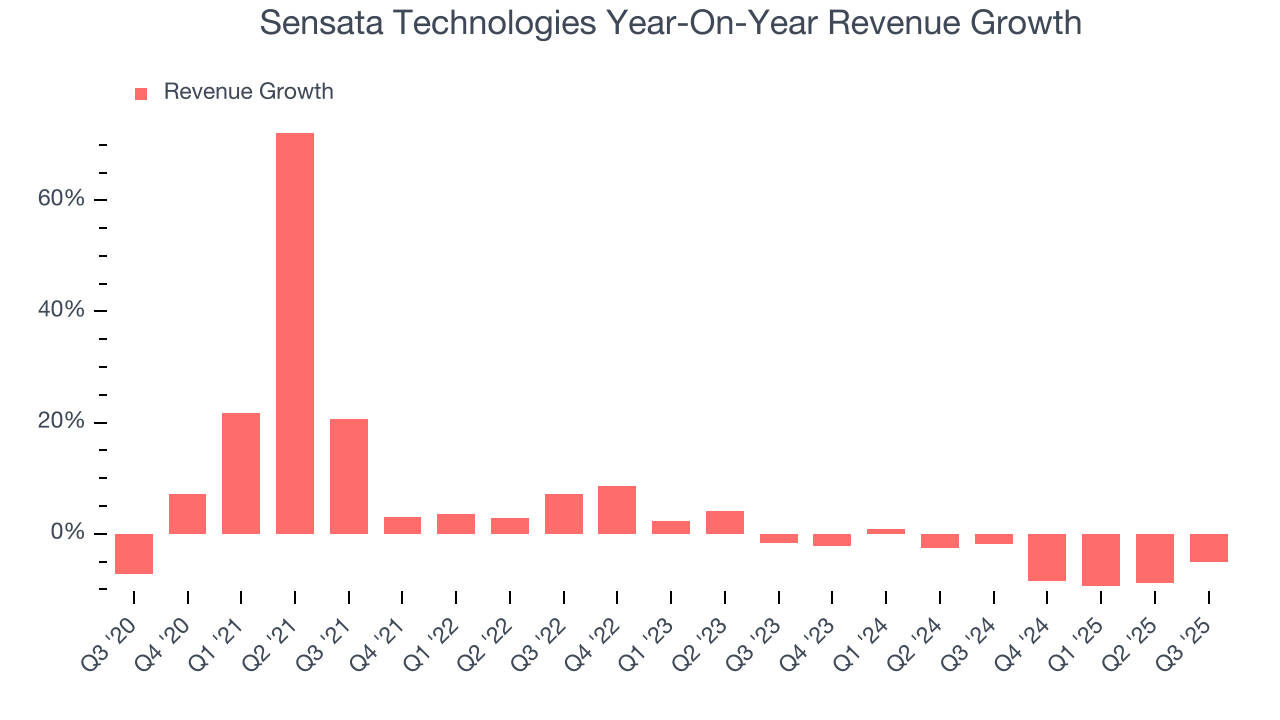
This quarter, Sensata Technologies’s revenue fell by 5.2% year on year to $932 million but beat Wall Street’s estimates by 1.1%. Despite the beat, the drop in sales could mean that the current downcycle is deepening. Company management is currently guiding for flat sales next quarter.
Looking further ahead, sell-side analysts expect revenue to grow 2.6% over the next 12 months. Although this projection implies its newer products and services will fuel better top-line performance, it is still below the sector average.
6. Product Demand & Outstanding Inventory
Days Inventory Outstanding (DIO) is an important metric for chipmakers, as it reflects a business’ capital intensity and the cyclical nature of semiconductor supply and demand. In a tight supply environment, inventories tend to be stable, allowing chipmakers to exert pricing power. Steadily increasing DIO can be a warning sign that demand is weak, and if inventories continue to rise, the company may have to downsize production.
This quarter, Sensata Technologies’s DIO came in at 87, which is 1 more days than its five-year average. These numbers suggest that despite the recent decrease, the company’s inventory levels are slightly above the long-term average.
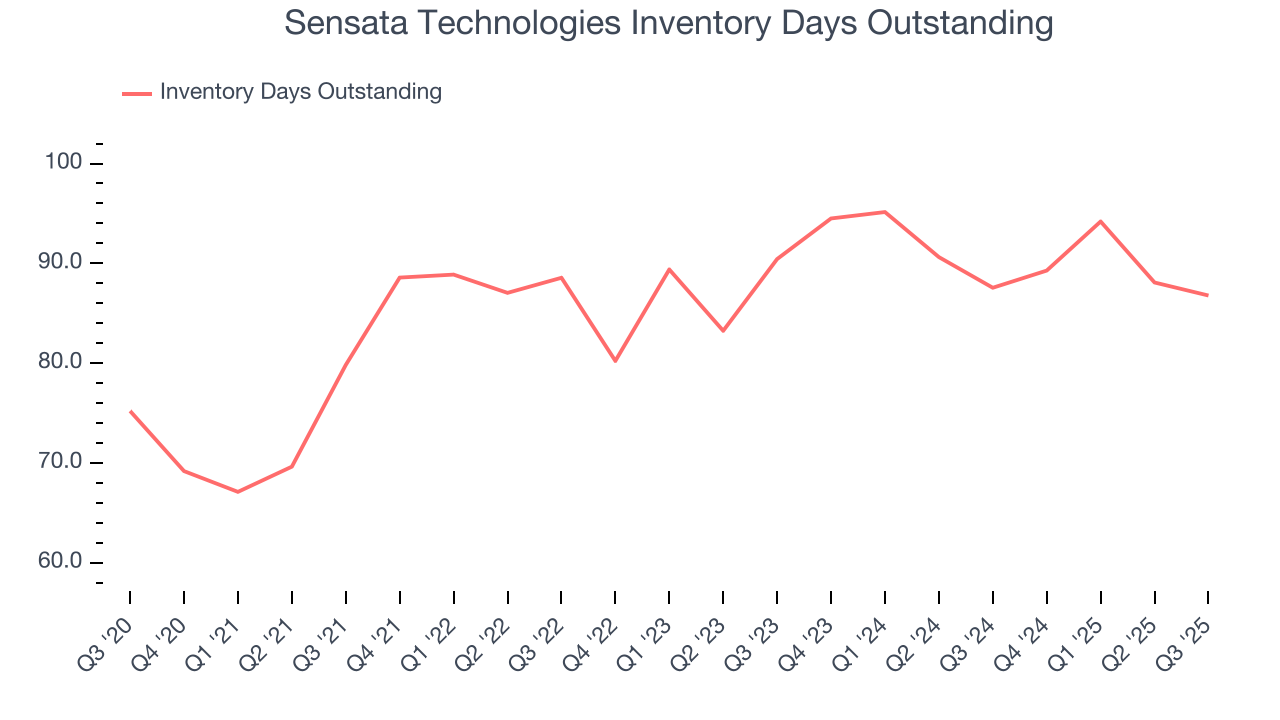
7. Gross Margin & Pricing Power
In the semiconductor industry, a company’s gross profit margin is a critical metric to track because it sheds light on its pricing power, complexity of products, and ability to procure raw materials, equipment, and labor.
Sensata Technologies’s gross margin is one of the worst in the semiconductor industry, signaling it operates in a competitive market and lacks pricing power. As you can see below, it averaged a 30.2% gross margin over the last two years. That means Sensata Technologies paid its suppliers a lot of money ($69.79 for every $100 in revenue) to run its business. 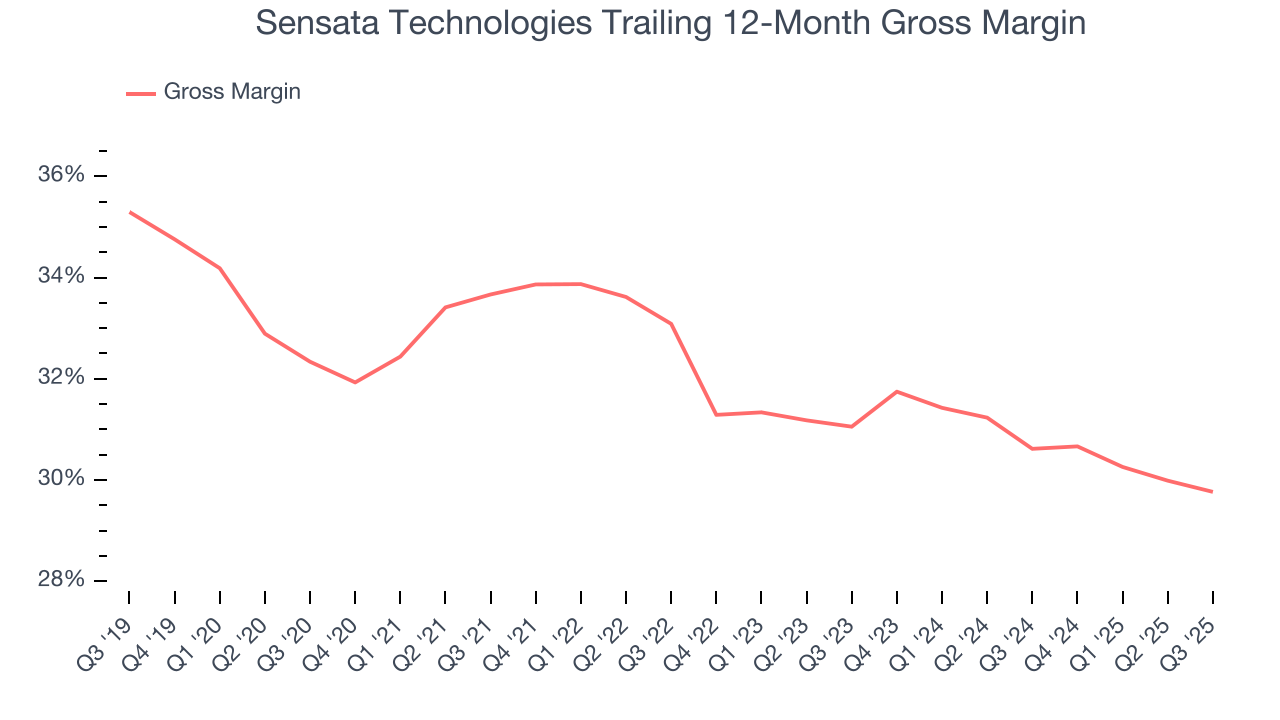
This quarter, Sensata Technologies’s gross profit margin was 27.8%, in line with the same quarter last year. On a wider time horizon, the company’s full-year margin has remained steady over the past four quarters, suggesting its input costs (such as raw materials and manufacturing expenses) have been stable and it isn’t under pressure to lower prices.
8. Operating Margin
Operating margin is an important measure of profitability as it shows the portion of revenue left after accounting for all core expenses – everything from the cost of goods sold to advertising and wages. It’s also useful for comparing profitability across companies with different levels of debt and tax rates because it excludes interest and taxes.
Sensata Technologies was profitable over the last two years but held back by its large cost base. Its average operating margin of 1.1% was weak for a semiconductor business. This result isn’t too surprising given its low gross margin as a starting point.
Analyzing the trend in its profitability, Sensata Technologies’s operating margin decreased by 11.1 percentage points over the last five years. This raises questions about the company’s expense base because its revenue growth should have given it leverage on its fixed costs, resulting in better economies of scale and profitability. Sensata Technologies’s performance was poor no matter how you look at it - it shows that costs were rising and it couldn’t pass them onto its customers.

This quarter, Sensata Technologies generated an operating margin profit margin of negative 13.2%, up 7.1 percentage points year on year. The increase was solid, and because its operating margin rose more than its gross margin, we can infer it was more efficient with expenses such as marketing, R&D, and administrative overhead.
9. Earnings Per Share
We track the long-term change in earnings per share (EPS) for the same reason as long-term revenue growth. Compared to revenue, however, EPS highlights whether a company’s growth is profitable.
Sensata Technologies’s EPS grew at an unimpressive 7.9% compounded annual growth rate over the last five years. This performance was better than its flat revenue but doesn’t tell us much about its business quality because its operating margin didn’t improve.

Diving into the nuances of Sensata Technologies’s earnings can give us a better understanding of its performance. A five-year view shows that Sensata Technologies has repurchased its stock, shrinking its share count by 7.8%. This tells us its EPS outperformed its revenue not because of increased operational efficiency but financial engineering, as buybacks boost per share earnings. 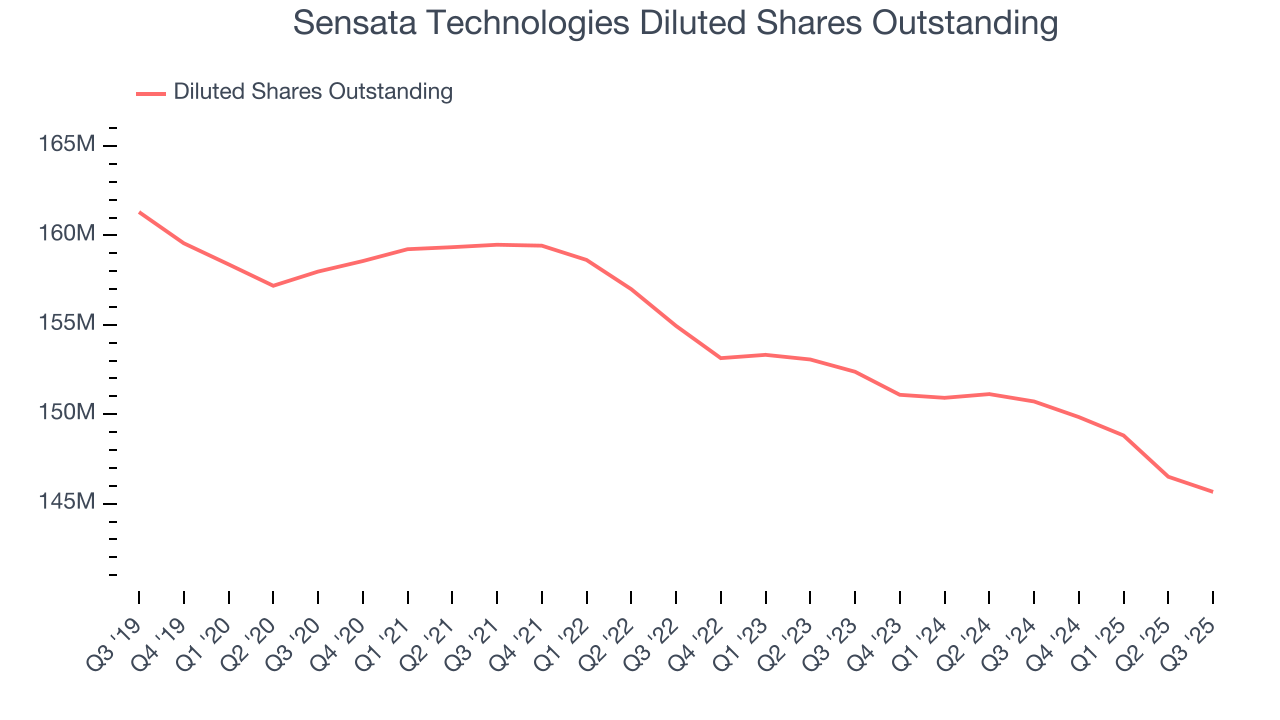
In Q3, Sensata Technologies reported adjusted EPS of $0.89, up from $0.86 in the same quarter last year. This print beat analysts’ estimates by 4.6%. Over the next 12 months, Wall Street expects Sensata Technologies’s full-year EPS of $3.30 to grow 7.9%.
10. Cash Is King
Free cash flow isn't a prominently featured metric in company financials and earnings releases, but we think it's telling because it accounts for all operating and capital expenses, making it tough to manipulate. Cash is king.
Sensata Technologies has shown weak cash profitability over the last two years, giving the company limited opportunities to return capital to shareholders. Its free cash flow margin averaged 10.2%, subpar for a semiconductor business.
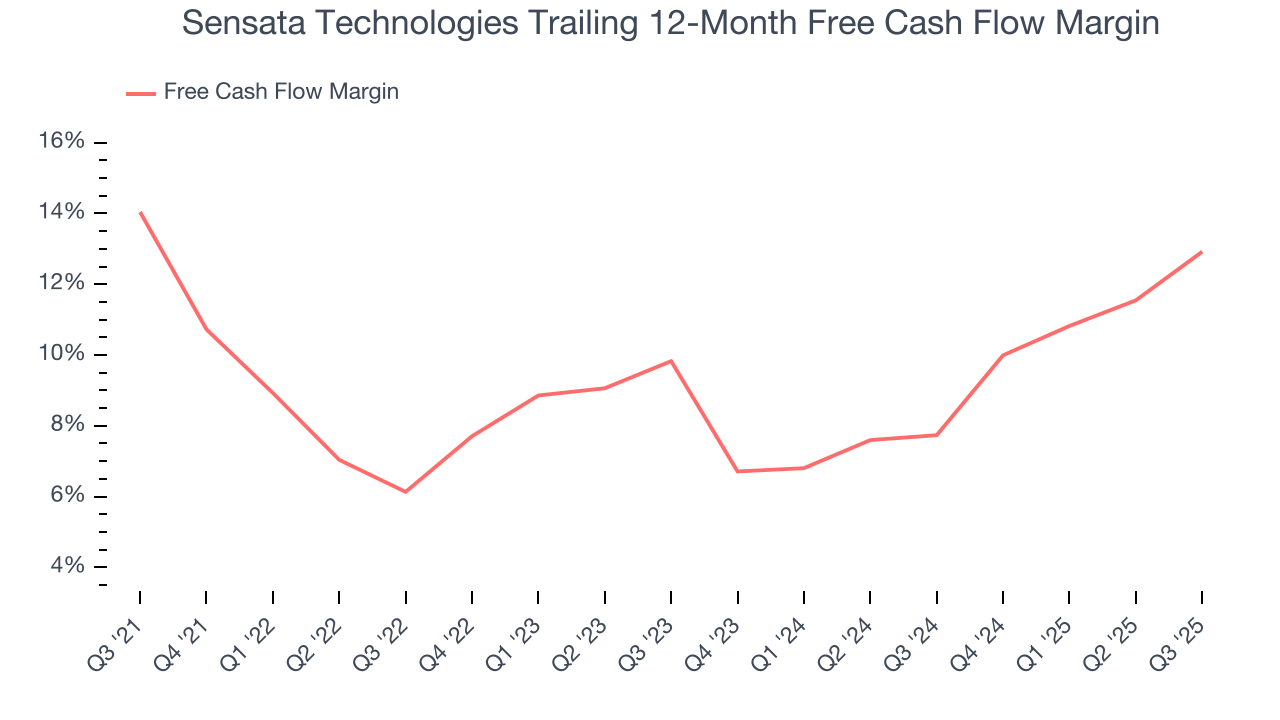
Sensata Technologies’s free cash flow clocked in at $136.2 million in Q3, equivalent to a 14.6% margin. This result was good as its margin was 5.3 percentage points higher than in the same quarter last year, but we wouldn’t read too much into the short term because investment needs can be seasonal, causing temporary swings. Long-term trends trump fluctuations.
11. Return on Invested Capital (ROIC)
EPS and free cash flow tell us whether a company was profitable while growing its revenue. But was it capital-efficient? A company’s ROIC explains this by showing how much operating profit it makes compared to the money it has raised (debt and equity).
Sensata Technologies historically did a mediocre job investing in profitable growth initiatives. Its five-year average ROIC was 5.3%, somewhat low compared to the best semiconductor companies that consistently pump out 35%+.
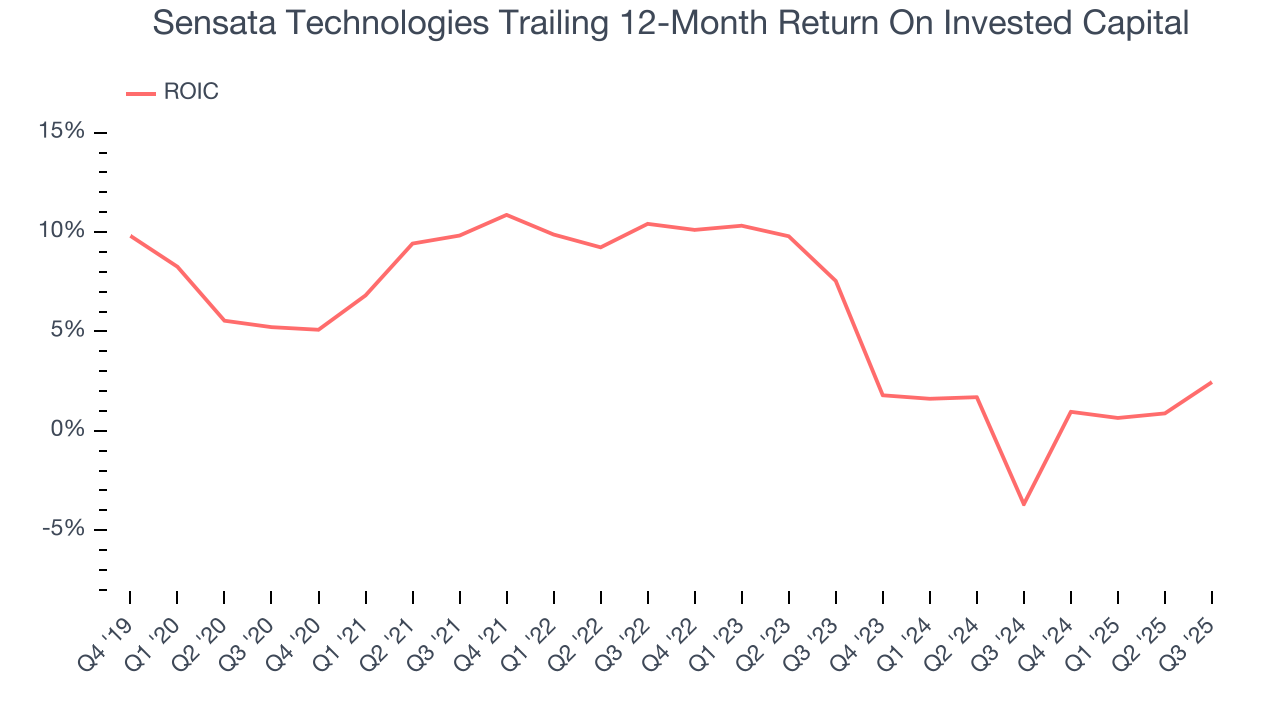
12. Balance Sheet Assessment
Sensata Technologies reported $791.3 million of cash and $3.2 billion of debt on its balance sheet in the most recent quarter. As investors in high-quality companies, we primarily focus on two things: 1) that a company’s debt level isn’t too high and 2) that its interest payments are not excessively burdening the business.

With $866 million of EBITDA over the last 12 months, we view Sensata Technologies’s 2.8× net-debt-to-EBITDA ratio as safe. We also see its $71.3 million of annual interest expenses as appropriate. The company’s profits give it plenty of breathing room, allowing it to continue investing in growth initiatives.
13. Key Takeaways from Sensata Technologies’s Q3 Results
It was good to see Sensata Technologies beat analysts’ EPS expectations this quarter. We were also happy its adjusted operating income outperformed Wall Street’s estimates. On the other hand, its revenue guidance for next quarter slightly missed. Overall, this quarter was mixed. The stock remained flat at $30.85 immediately following the results.
14. Is Now The Time To Buy Sensata Technologies?
Updated: December 4, 2025 at 9:28 PM EST
Are you wondering whether to buy Sensata Technologies or pass? We urge investors to not only consider the latest earnings results but also longer-term business quality and valuation as well.
We cheer for all companies solving complex technology issues, but in the case of Sensata Technologies, we’ll be cheering from the sidelines. First off, its revenue growth was mediocre over the last five years, and analysts expect its demand to deteriorate over the next 12 months. On top of that, Sensata Technologies’s low gross margins indicate some combination of pricing pressures or rising production costs, and its relatively low ROIC suggests management has struggled to find compelling investment opportunities.
Sensata Technologies’s P/E ratio based on the next 12 months is 9.2x. While this valuation is optically cheap, the potential downside is huge given its shaky fundamentals. There are better investments elsewhere.
Wall Street analysts have a consensus one-year price target of $39.13 on the company (compared to the current share price of $33.12).
Although the price target is bullish, readers should exercise caution because analysts tend to be overly optimistic. The firms they work for, often big banks, have relationships with companies that extend into fundraising, M&A advisory, and other rewarding business lines. As a result, they typically hesitate to say bad things for fear they will lose out. We at StockStory do not suffer from such conflicts of interest, so we’ll always tell it like it is.



